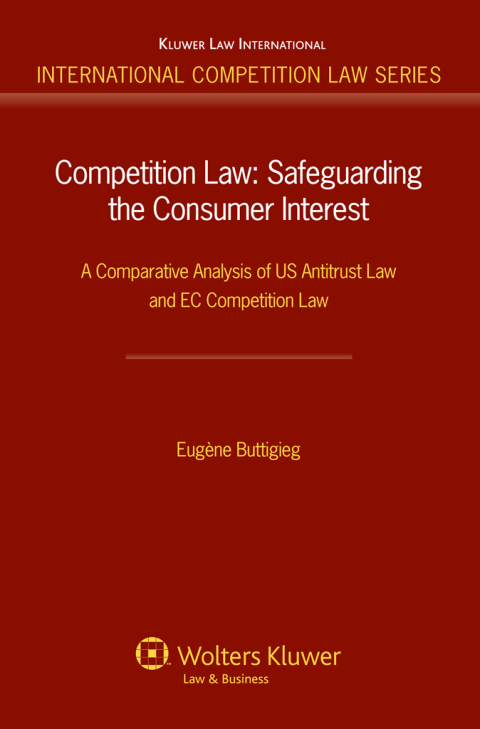Description
Efnisyfirlit
- Cover
- Title Page
- Copyright Page
- Contents
- Preface
- List of Abbreviations
- Chapter 1: The Objectives of Competition Policy and the Consumer Interest
- 1 Meaning of Competition and Consumer Welfare
- 1.1 Competition as a Process of Rivalry
- 1.2 Competition as the Absence of Restraint
- 1.3 Competition as a State of Perfect Competition
- 1.4 Competition as the Existence of Fragmented Industries and Markets
- 1.5 Competition as a State of Economic Freedom and Dispersal of Private Economic Power
- 1.6 Competition as a State of Affairs That Maximizes Consumer Welfare
- 2 Efficiency, Consumer Welfare and Consumer Interests
- 3 The Theory of Rivalry and the Theory of Automatic Exclusion: Protecting Competitors Rather than Consumers
- Chapter 2: Goals Underlying US Antitrust Law
- 1 Goals Other than Consumer Welfare
- 2 Consumer Welfare as the Sole Goal
- 3 Criticism of the Consumer Welfare Notion for a Broader Notion Protecting Consumer Interests
- 4 Consumer Interest Standard
- Chapter 3: Goals Underlying EC Competition Law
- 1 Market Integration as the Paramount Goal
- 2 A Multitude of Other Goals
- 2.1 Non-competition Concerns Affecting General Economic Policy
- 2.1.1 Competitiveness and Industrial Policy
- 2.1.2 Monetary Policy
- 2.1.3 Employment Policy
- 2.2 Non-economic Non-competition Policies
- 3 Consumer Well-Being: Not the Sole or Primary Goal of EC Competition Law
- 4 The Risk of ‘Capture’
- 5 A Consumer Interest Standard for the EU
- Chapter 4: Collusive Practices and Consumer Interests
- 1 The European Commission’s Approach to the Article 81(1) Prohibition
- 2 Vertical Restraints
- 3 The Effect of the Goal of Market Integration on Consumer Interests in the Context of Vertical Restraints
- 3.1 Contrasting US Approach to Vertical Restraints
- 3.2 Instances Where the Pursuit of the Market Integration Goal Coincides with the Promotion of Consumer Interests
- 3.3 Instances Where the Pursuit of the Market Integration Goal Can Damage Consumer Interests
- 4 Horizontal Restraints
- 4.1 Horizontal Agreements in the Form of Joint Ventures and Alliances
- 5 Licensing Agreements
- Chapter 5: The Legal Exception in Article 81 EC and the Consumer Interest
- 1 The Consumer Benefit Requirement in Article 81(3)
- 2 Safeguarding the Consumer Interest through Block Exemptions
- 3 A Consumer Interest Standard for Collusive Behaviour
- Chapter 6: Abusive Pricing and Consumer Interests
- 1 Dominance and Monopoly
- 2 The Concept of Abuse
- 3 Excessive Pricing
- 3.1 Unfair Prices to the Detriment of Consumers
- 3.2 Direct Price Control
- 4 Predatory Pricing
- 4.1 Below-Cost Pricing: When Is a Good Bargain a Raw Deal for Consumers?
- 4.2 Meeting Competition through Selective Below-Cost Pricing
- 4.3 Pricing in a Non-dominated Market
- 5 Price Discrimination
- 5.1 Meeting Competition through Selective Above-Cost Pricing
- 5.2 Price Differentiation on a Geographic Basis
- Chapter 7: Abusive Non-pricing Practices and Consumer Interests
- 1 Tying Arrangements
- 1.1 Different Forms of Tying
- 1.2 Implications for Consumers
- 1.3 US and EC Law on Tying
- 1.4 Detecting Tying and Recognizing Efficiencies and Consumer Benefits
- 2 Inefficient Management and ‘Quiet Life’
- 2.1 Unilateral Suppression of Own Technology
- 2.2 Unilateral Suppression of Competing Technology
- 3 Towards a More Careful Consideration of Consumer Harm and Consumer Benefits?
- Chapter 8: Merger Control and Consumer Interests
- 1 Reasons for Merger Control
- 1.1 Coordinated Interaction
- 1.2 Unilateral Effects
- 1.3 Exclusionary Behaviour and Portfolio Effects
- 1.4 Innovation Market Concept
- 1.5 Mergers between Potential Competitors
- 1.6 Vertical Mergers
- 2 The Appraisal Test in Merger Control
- 2.1 Safeguarding the Interests of Vulnerable Consumers
- 2.2 Market Power and the Level of Concentration: The Determining Factors
- 2.3 SLC Test versus Dominance Test
- Chapter 9: Efficiency Claims in US Merger Control: Safeguarding the Consumer Interest
- 1 Initial Reluctance
- 2 Reasons for Reluctance
- 3 Greater Acceptance of the Defence
- 4 A Guarded Approach to Efficiencies
- 5 A Two-Fold Test with a Consumer Benefit Qualification
- 5.1 Merger-Specific
- 5.2 Verifiable
- 5.3 Positive Proof of Passing of Efficiencies to Consumers: The Consumer Benefit Requirement
- 6 Courts’ Endorsement of the Consumer Benefit Test
- 7 Criticism of the Positive Proof Requirement in the Consumer Benefit Test
- 8 The ‘Sufficiency’ Requirement and Consumer Well-Being
- 8.1 Total Welfare Standard versus Consumer Interest Standard
- 8.2 Applying the Consumer Interest Standard: The Nature and Degree of Cost Savings Required
- 8.3 Trade-Off via the Rule of Reason Approach versus the Formal Rules Approach
- 9 Consideration of Efficiencies under Current US Merger Control Law
- Chapter 10: Consumer Interests under the EC Merger Control Regime
- 1 The Effect of Market Integration on Firms’ Efficiency Justifications for Merger
- 2 Efficiency Claims under Article 81 EC in the Context of the Cooperative Elements in a Joint Venture
- 3 Efficiency Claims under the Merger Regulation
- 3.1 Legislative Provisions
- 3.2 Commission Decisional Practice and Court Case Law
- 3.3 Efficiencies: An Undisclosed Factor in Merger Appraisal?
- 3.4 Post-2004: Explicit Consideration of Efficiencies against a Consumer Interest Standard
- 4 Towards a Merger Control Regime That Guarantees Consumer Well-Being
- Chapter 11: The Way Forward
- Bibliography
- Table of Cases
- Table of Legislation
- Index






Reviews
There are no reviews yet.